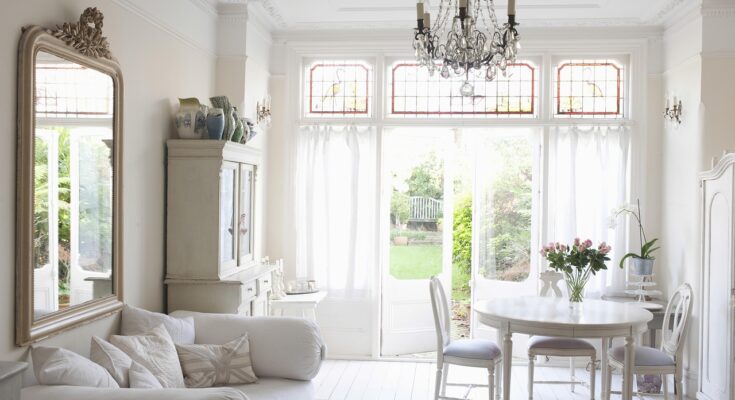ZonaJakarta – When it comes to designing or choosing a home, most people focus on square footage, location, or maybe how many bedrooms the place has. But there’s one architectural detail that quietly changes everything—and that’s the height of the ceiling.
It may not be the flashiest element in the blueprint, but ceiling height affects everything: the vibe, the lighting, how furniture feels in a room, your energy bills, and even how you live day to day. Whether you’re living under sky-high beams or a snug, compact ceiling, the vertical space above your head plays a bigger role than you might think.
So what exactly happens when you go high or stay low? Let’s break down how ceiling height shapes your home’s personality—and why it might matter more than you ever realized.
The Grandeur of High Ceilings
Walk into a room with a vaulted or double-height ceiling, and you feel it instantly: airiness, openness, a sense of freedom. High ceilings are often associated with luxury, modern design, and architectural drama. They’re a favorite in lofts, open-plan homes, and upscale living rooms because they create that “wow” moment.
With more space above eye level, high ceilings also allow for larger windows, bigger light fixtures, and bolder artwork. Natural light tends to pour in more generously, and the room feels more expansive—even if the floor space isn’t enormous.
But with that elegance comes a few trade-offs. Heating and cooling a room with high ceilings can be trickier (and pricier). Sound tends to echo more, especially if the room isn’t well-furnished or if you opt for minimal décor. And sometimes, the coziness factor takes a hit—large spaces can feel impersonal or “too open” if not styled carefully.
That said, for homeowners who value spaciousness, air, and drama, high ceilings offer unmatched visual appeal and flexibility.
The Comfort of Low Ceilings
On the flip side, there’s something undeniably comforting about a room with lower ceilings. These spaces naturally feel more grounded, more intimate, and easier to warm up—both literally and emotionally.
Low ceilings, often found in older homes or cozy bungalows, lend themselves to snug design styles: think warm lighting, plush furniture, and layered textures. It’s the kind of space where you can curl up with a book and feel tucked in, not exposed.
From a practical standpoint, low-ceilinged rooms are also easier to heat and cool, which can save energy and money. Cleaning ceiling fans or changing lightbulbs? Way less hassle. And because the vertical space is limited, decorating becomes more about human scale—furniture feels more proportionate, and lighting can stay simple.
However, low ceilings can feel a bit claustrophobic if the color palette is too dark or the room is over-furnished. Without careful design choices, the space may feel smaller than it is. The trick is to use strategic lighting, light paint colors, and low-profile furniture to visually stretch the room.
Mood, Movement, and Mindset
Interestingly, ceiling height doesn’t just affect design—it affects how we think and feel. Studies have shown that people tend to feel more creative and free-thinking in rooms with high ceilings, while lower ceilings encourage focus, calm, and detail-oriented thinking.
So depending on what kind of energy you want in your home—creative inspiration or relaxed focus—ceiling height might play a subtle but important role.
In high-ceiling spaces like studios, galleries, or open kitchens, you might feel energized and inspired. In lower-ceilinged offices or bedrooms, you may feel more grounded and secure.
Renovation Realities and Architectural Limits
It’s worth noting that ceiling height isn’t always something you can change easily. Raising a ceiling requires serious renovation, structural work, and often a sizable budget. Lowering a ceiling is rare—and usually only done to hide ductwork or improve insulation.
Because of this, homeowners are increasingly turning to design tricks to play with perception. High-ceilinged rooms are being “brought down” with paint, beams, or hanging plants to add intimacy. Meanwhile, low-ceilinged rooms are “lifted” with vertical wall décor, light hues, and clever lighting design.
Final Thought: It’s Not Just Height—It’s How You Use It
At the end of the day, there’s no universal “right” height for a ceiling. It depends on your personal style, how you use your space, and the kind of feeling you want your home to evoke.
High ceilings offer visual drama and a sense of spaciousness, while low ceilings deliver warmth, comfort, and practical benefits. Each brings its own personality to a home, and with the right approach, both can be stunning and functional.
So whether you’re stretching up or staying close to the ground, just remember: great design isn’t about how high your ceiling is—it’s about how well you live under it. (*)




